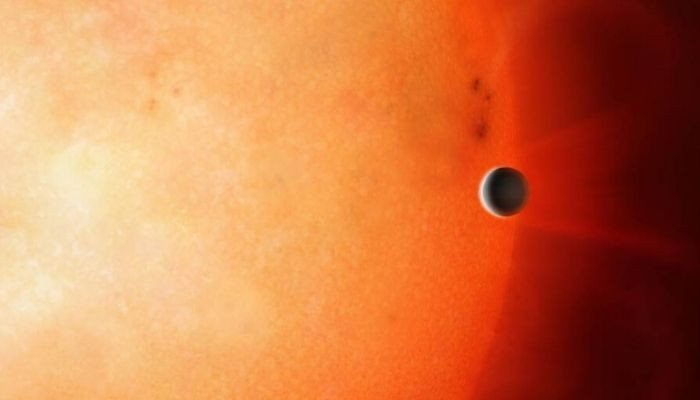NGTS-10b: the shortest period hot Jupiter yet discovered
 We verified the stellar rotation period by calculating the generalized autocorrelation function (G-ACF) of the NGTS photometric time series (Kreutzer et al., in preparation). The ACF is a proven method for extracting stellar variability from photometric light curves (as in McQuillan, Mazeh & Aigrain 2014), and this generalization allows analysis of irregularly sampled data. This method has been used on NGTS data to successfully extract rotation periods from a large numbers of stars within the Blanco 1 open cluster (Gillen et al. 2019).We first binned the time series to 20 min, giving 2432 data points. As the G-ACF does not return an error on the rotation period directly, we employ a bootstrapping technique. We randomly select 2000 data points from the binned NGTS time series and run the G-ACF analysis. This was repeated 1024 times, giving a rotation period and error of 17.290 ± 0.008 d, where the error is the standard deviation in the periods from the 1024 runs, divided by 1024−−−−√1024. |

Japan Unveils Human Washing Machine, Now You Can Get Washed Like Laundry (video)
120901.12.2025, 20:45
Chinese humanoid robot sets Guinness World Record with 106-km inter-city walk (video)
85124.11.2025, 16:30
Musk։ Optimus will be able to eliminate poverty and provide everyone with a universal high income (video)
83823.11.2025, 12:45
AGMI researchers expose the hidden role of female perpetrators in the Armenian Genocide (photo)
82113.11.2025, 21:15
LVM3-M5 mission successfully launches CMS-03 satellite (video)
112902.11.2025, 21:17
Google разработала квантовый алгоритм, работающий в 13 тыс. раз быстрее алгоритма суперкомпьютеров
148122.10.2025, 23:44
